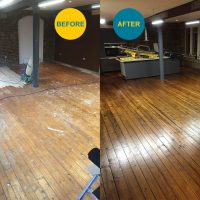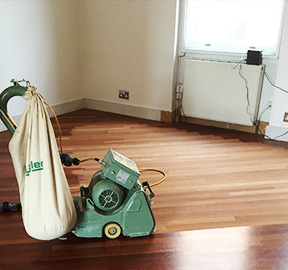Gap Filling
Gap-filling a floor is an option that many people like since it brings a uniform finish to the floor and helps exclude drafts and this comes in two types. The first being the ‘mass fill’ system used after installation of a new floor. The other system is to use wood slivers.
With mass filling, we use the dust provided from the floor to attain a perfect colour match and mix it with a resin to fill any small gaps. This method is used after new floor installations generally and only works with tongue and groove or parquet constructions. The whole area is filled and when dry, sanded back. The result of this is a perfectly sealed floor that will hold up well to any surface liquids penetrating any weak spots and also cosmetically will give the floor a certain elegance.
With the sliver method, these are pre-cut tapered strips from 0mm – 6mm (or 8mm if required). Mostly used on square edged Victorian-style floorboards when there is a problem with draughts coming up from a cellar or, simply, if it makes the floor more aesthetically pleasing. Each sliver is hammered into place using a high-quality PVA adhesive, left to dry and then trimmed before the sanding stage.This method guarantees that the filler will not pop out or drop down below the floor when the British seasons play their part in moving the planks over time. We have seen many floors through the years that have been filled with ugly flexible filler or the dust and resin method on square edged boards. The result is always the same over time. Failure.
















